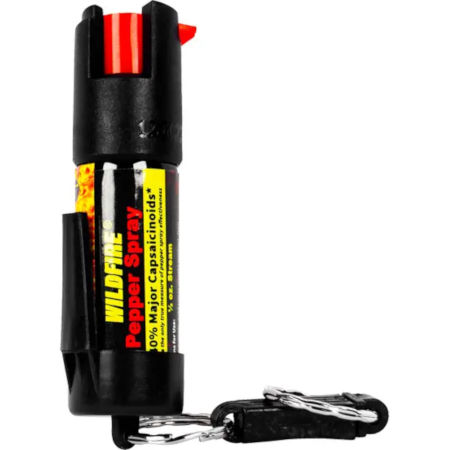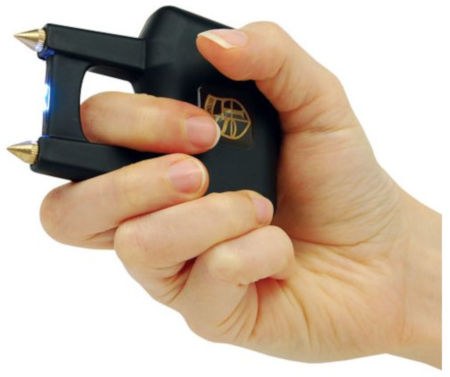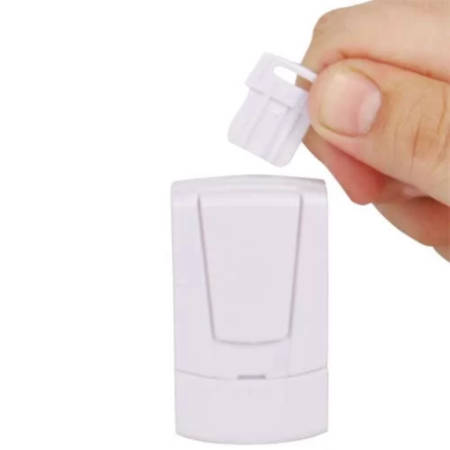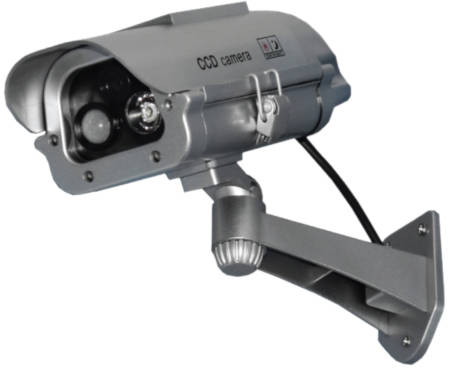Personal Protection Options
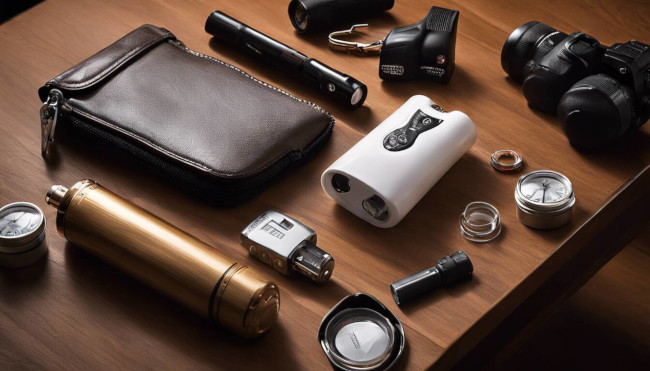
Personal Protection Options for Self-Defense and Security
In today’s world, personal safety is a priority that cannot be overlooked. Whether you’re walking alone at night, traveling, or simply looking to enhance your home security, having the right personal protection tools is essential. This guide will explore the top five personal protection options that can help keep you and your loved ones safe.
1. Non-Lethal Self-Defense Tools
Non-lethal self-defense tools are designed to incapacitate an attacker without causing permanent harm. These tools are accessible, easy to carry, and effective, making them ideal for everyday protection.
Pepper Sprays
Pepper spray is a popular self-defense tool that works by releasing a powerful stream of oleoresin capsicum (OC), a natural inflammatory compound derived from chili peppers. When sprayed, it causes immediate and intense pain, temporary blindness, and difficulty breathing, allowing the user to escape from an attacker.
Wildfire 1.4% MC 1/2 oz pepper spray w/ belt clip and quick release keychain
- Types of Pepper Spray: There are several types of pepper sprays, including keychain sprays, gel sprays, and foggers. Gel sprays are especially effective in windy conditions as they minimize blowback and deliver a more concentrated stream to the target.
- Legal Considerations: While pepper spray is legal in most states, there are restrictions on the concentration of OC and the size of the canister. It’s important to familiarize yourself with local laws before purchasing.
Example: Pepper Spray Gel is ideal for discreet carry and quick access, making it a reliable choice for personal protection.
Stun Guns
Stun guns deliver a high-voltage electric shock to an attacker, causing temporary paralysis and extreme pain. This incapacitation gives the user valuable time to escape and seek help.
The Spike Stun Gun - 20 Million
- Types of Stun Guns: Stun guns come in various forms, including compact models, baton-style stun guns, and even disguised options like stun gun flashlights. Each type offers different levels of portability and power, so it’s important to choose one that suits your needs.
- Usage Tips: When using a stun gun, it’s crucial to make direct contact with the attacker’s body, aiming for areas with high nerve concentrations such as the neck, abdomen, or thighs.
Example: The Spike Stun Gun offers easy handling and powerful stopping power, making it an excellent choice for self-defense.
TASER Weapons
TASER devices are similar to stun guns but have the added advantage of incapacitating an attacker from a distance. Tasers fire two small dart-like electrodes connected to the main unit by conductive wires, delivering a shock that disrupts voluntary control of muscles.
- Effective Range: Tasers can be effective from a distance of up to 15 feet, providing a significant advantage in situations where maintaining distance from the attacker is crucial.
- Training: Proper training is recommended to use a Taser effectively, as it requires precision and understanding of the device’s mechanisms.
Example: The TASER 7CQ is a popular model designed for civilian self-defense, offering both distance and close-range protection.
Personal Alarms
Personal alarms are small devices that emit a loud sound when activated. The noise can startle an attacker and draw attention to the situation, potentially deterring further aggression.
- Benefits of Personal Alarms: These devices are non-lethal, easy to use, and can be carried discreetly on a keychain or in a pocket. They are particularly useful in situations where calling out for help may not be practical.
- Usage Scenarios: Personal alarms are ideal for college students, elderly individuals, or anyone who frequently walks alone, as they provide an immediate alert system in case of an emergency.
Example: Compact Personal Alarms from TBOTECH are designed for easy use and portability, making them an essential addition to any personal protection plan.
Self-Defense Keychains
Self-defense keychains are small, discreet tools that can be used to fend off an attacker. These keychains often feature sharp points or other defensive features that can be used to strike an assailant.
Brutus - A Keychain Personal Protection Option
- Types of Self-Defense Keychains: Popular models include the kubotan, which is a small, pointed rod used to apply pressure to sensitive areas, and keychains with built-in spikes or other features for self-defense.
- Advantages: These tools are easy to carry and conceal, making them a practical option for everyday carry. They can be used to target pressure points or deliver forceful strikes in close-quarters combat.
Example: The Kubotan Self-Defense Keychain is a practical and discreet tool that can be used to protect yourself in a variety of situations.
2. Home Security Devices
Protecting your home is just as important as protecting yourself when you’re out and about. Home security devices provide an added layer of defense against intruders and help ensure the safety of your loved ones.
Window or Door Alarm with a Deactivation Key - Remove to Arm!
Motion-Activated Lights
Motion-activated lights are a simple yet effective way to deter potential intruders. These lights automatically turn on when they detect movement, illuminating dark areas and startling would-be burglars.
- Placement Tips: Install motion-activated lights near entry points such as doors, windows, and driveways. This not only enhances security but also provides better visibility for you and your guests.
- Energy Efficiency: Many motion-activated lights are now available in energy-efficient LED options, which offer long-lasting illumination without increasing your energy bills.
Example: Motion-Activated Security Lights are an excellent investment for enhancing home safety and deterring intruders.
Surveillance Cameras
Surveillance cameras are an essential component of any home security system. They provide real-time monitoring of your property and can serve as a deterrent to potential intruders.
- Types of Surveillance Cameras: There are various types of cameras available, including wireless models, doorbell cameras, and outdoor cameras with night vision. Choose a camera system that fits your security needs and budget.
- Recording and Storage: Many modern surveillance systems offer cloud storage, allowing you to access footage remotely and ensure that your recordings are safe even if the camera is tampered with.
Example: Wireless Surveillance Cameras provide peace of mind with their easy installation and remote monitoring capabilities.
Smart Locks
Smart locks allow you to control access to your home remotely. They can be operated via smartphone apps, providing convenience and enhanced security.

- Advantages of Smart Locks: With smart locks, you can lock and unlock your doors from anywhere, grant temporary access to visitors, and receive alerts when someone enters your home.
- Integration with Smart Home Systems: Many smart locks can be integrated with other smart home devices, such as security cameras and alarm systems, for a comprehensive home security solution.
Example: Schlage offers a modern and secure way to manage access to your home, providing both convenience and peace of mind.
3. Firearms for Personal Protection
While firearms are a more controversial option for personal protection, they remain a powerful tool for those who choose to use them responsibly. Firearms require extensive training, proper handling, and a deep understanding of local laws.
Legal and Ethical Considerations
Owning a firearm comes with significant responsibilities, including ensuring that the weapon is stored securely and is only used in situations that justify its use. It’s essential to be aware of and comply with local laws regarding firearm ownership, carrying, and usage.
- Training: Proper training is crucial for anyone considering firearm ownership. This includes learning how to shoot accurately, maintain the weapon, and handle it safely.
- Storage: Firearms should be stored in a locked safe, out of reach of children and unauthorized users. Biometric safes are a popular choice for quick access while maintaining security.
Example: If you’re considering a firearm for personal protection, explore TBOTECH’s range of Gun Safes to ensure safe and responsible storage.
4. Self-Defense Training
Physical tools are important, but knowing how to use them effectively is crucial. Self-defense training, including martial arts and specialized classes, equips you with the skills and confidence needed to protect yourself.
Martial Arts Training
Martial arts training goes beyond just learning to fight; it builds discipline, confidence, and awareness. Techniques such as striking, blocking, and grappling can be invaluable in self-defense situations.
- Types of Martial Arts: Consider training in disciplines such as Krav Maga, Brazilian Jiu-Jitsu, or Muay Thai. Each offers different techniques and focuses, allowing you to choose the one that best fits your needs.
- Benefits: Martial arts training improves physical fitness, enhances mental focus, and teaches you how to remain calm and effective under pressure.
Example: Krav Maga is a highly effective martial art for self-defense, emphasizing real-world scenarios and practical techniques.
Self-Defense Classes
Self-defense classes provide practical skills and techniques that can be used in everyday situations. These classes often focus on how to escape holds, defend against armed attackers, and use improvised weapons.
- Practical Techniques: Self-defense classes teach techniques that are easy to learn and apply, making them accessible to people of all ages and fitness levels.
- Situational Awareness: In addition to physical techniques, self-defense classes emphasize the importance of situational awareness and mental preparedness.
Example: Consider enrolling in a self-defense class that focuses on practical, real-world scenarios to enhance your personal protection skills.
5. Situational Awareness and Mental Preparedness
While physical tools and security devices are important, your mindset and awareness play a crucial role in personal protection. Situational awareness involves being constantly aware of your surroundings, identifying potential threats before they escalate, and knowing how to react in high-pressure situations.
Situational Awareness
Situational awareness is the ability to perceive and understand what is happening around you and to anticipate how events will unfold. This skill allows you to avoid dangerous situations before they occur, making it a critical aspect of personal protection.
-
Key Practices:
- Stay alert in unfamiliar environments or when walking alone, especially at night.
- Regularly scan your surroundings and take note of any unusual behavior or potential threats.
- Avoid distractions like excessive phone use that can lower your awareness of what’s happening around you.
-
Practical Application: Situational awareness is particularly important in public spaces like parking lots, public transit, and crowded areas where threats can arise suddenly. Being aware of escape routes and potential safe zones can make a significant difference in how you handle a crisis.
Mental Preparedness
Being mentally prepared for a confrontation is just as important as having the right tools. Mental preparedness involves training your mind to remain calm under pressure, making quick decisions, and using your resources effectively during an emergency.
-
Importance of Training:
- Consider enrolling in self-defense classes that not only teach physical techniques but also mental strategies for staying calm and focused during an attack.
- Practice visualization techniques where you mentally rehearse different scenarios and plan your responses. This can make you more decisive in real situations.
-
Benefits: Mental preparedness reduces the likelihood of panic in dangerous situations, allowing you to think clearly and use your self-defense tools effectively. It also boosts your confidence, making you less likely to be targeted by potential attackers.
By focusing on situational awareness and mental preparedness, you enhance your ability to protect yourself even without relying solely on physical tools. This holistic approach to personal protection ensures that you’re equipped to handle any situation with confidence and poise.
Conclusion: Be Prepared for Any Situation
When it comes to personal protection, it’s essential to choose options that align with your lifestyle, comfort level, and legal requirements. Whether you prefer non-lethal tools like pepper spray and stun guns, or you’re interested in home security devices and self-defense training, being prepared is the key to staying safe.
By exploring the various personal protection options available and selecting the ones that best suit your needs, you can ensure that you and your loved ones are equipped to handle any situation. Remember, the best defense is a proactive approach—prepare yourself mentally and physically, and you’ll be ready to protect yourself no matter the circumstances.
For more information on personal protection tools and strategies, or to explore our wide range of products, visit TBOTECH today. Stay safe and secure, no matter where you are!
Add your comment now!
Post Comment
